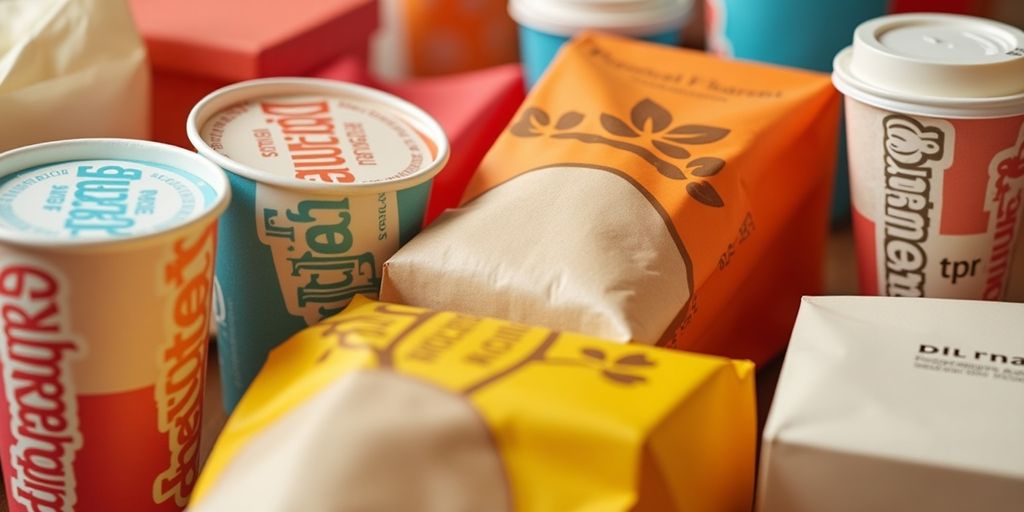In the fast-evolving world of packaging, the significance of barrier coatings to prevent migration is paramount. These coatings play a crucial role in keeping harmful substances from leaching into consumables. This is particularly vital in the food and beverage industry, where maintaining the integrity and safety of the product is a top priority.

Understanding Barrier Coatings
Barrier coatings are specialized materials applied to packaging surfaces to create a protective layer. This layer acts as a shield, preventing unwanted substances from migrating from the packaging into the product. The use of these coatings is becoming increasingly important as consumers demand safer and more sustainable packaging solutions.
Why Are Barrier Coatings Necessary?
The primary function of barrier coatings is to safeguard the contents of the package. They ensure that the flavors, aromas, and nutrients of the product are preserved, while also preventing external contaminants from entering. This is especially critical for food products, where maintaining freshness and safety is essential.
Types of Barrier Coatings
There are several types of barrier coatings used in the packaging industry. These include oxygen barriers, moisture barriers, and grease barriers. Each type serves a specific purpose and is chosen based on the nature of the product being packaged. For instance, moisture barriers are commonly used for products that need to remain dry, such as snacks and cereals.
The Role of Barrier Coatings in Food Safety
In the food industry, barrier coatings are indispensable. They not only prevent contamination but also extend the shelf life of the product. By providing a robust barrier, these coatings help in maintaining the quality and safety of food items, ensuring that they reach consumers in optimal condition.
Preventing Migration in Packaging
Migration in packaging refers to the movement of substances from the packaging materials into the product. This can be harmful, especially if the migrating substances are chemicals or toxins. Barrier coatings are engineered to prevent such migration, making them a critical component in safe packaging.
Innovations in Barrier Coatings
As the demand for safer packaging grows, innovations in barrier coatings continue to emerge. These include the development of eco-friendly coatings that not only prevent migration but are also biodegradable. Such advancements are a testament to the industry’s commitment to sustainability.
Eco-friendly Barrier Coatings
The shift towards sustainability has led to the rise of eco-friendly barrier coatings. These coatings are designed to minimize environmental impact while providing the same level of protection as traditional coatings. They are made from renewable resources and are often biodegradable, aligning with the global push for sustainable packaging solutions.
Challenges in Implementing Barrier Coatings
While barrier coatings offer numerous benefits, their implementation is not without challenges. One of the main hurdles is cost. High-quality barrier coatings can be expensive, which can be a barrier for smaller companies. Additionally, ensuring compatibility with different types of packaging materials can be complex.
Cost Implications
The cost of implementing barrier coatings can vary depending on the type of coating and the application process. For companies looking to adopt these coatings, it’s important to weigh the benefits against the costs to determine the best approach for their products.
Future of Barrier Coatings in Packaging
The future of barrier coatings in packaging looks promising. With ongoing research and development, we can expect to see more advanced coatings that offer even greater protection and sustainability. As consumer awareness grows, the demand for safer packaging solutions will continue to drive innovation in this field.
Advancements on the Horizon
Emerging technologies, such as nanotechnology, are paving the way for the next generation of barrier coatings. These advancements promise to enhance the protective qualities of coatings while reducing their environmental footprint. The integration of smart technologies in barrier coatings is also an exciting prospect, offering real-time monitoring of packaging integrity.
Conclusion
In conclusion, barrier coatings to prevent migration are essential for ensuring the safety and quality of packaged products. As the industry continues to evolve, these coatings will play a pivotal role in shaping the future of safe and sustainable packaging. By investing in innovative barrier technologies, companies can meet consumer demands for safer products while contributing to a more sustainable world.

FAQs
What are barrier coatings made of?
Barrier coatings can be made from a variety of materials, including polymers, waxes, and biodegradable substances. The choice of material depends on the specific requirements of the packaging application.
How do barrier coatings enhance food safety?
Barrier coatings enhance food safety by preventing the migration of harmful substances from packaging materials into the food. They also help in preserving the freshness and quality of the food product.
Are there eco-friendly options for barrier coatings?
Yes, there are eco-friendly options for barrier coatings. These coatings are made from renewable resources and are designed to be biodegradable, minimizing their environmental impact.
For more information about coatings in packaging and food-grade ink regulations, be sure to explore these resources.
This article contains affiliate links. We may earn a commission at no extra cost to you.






